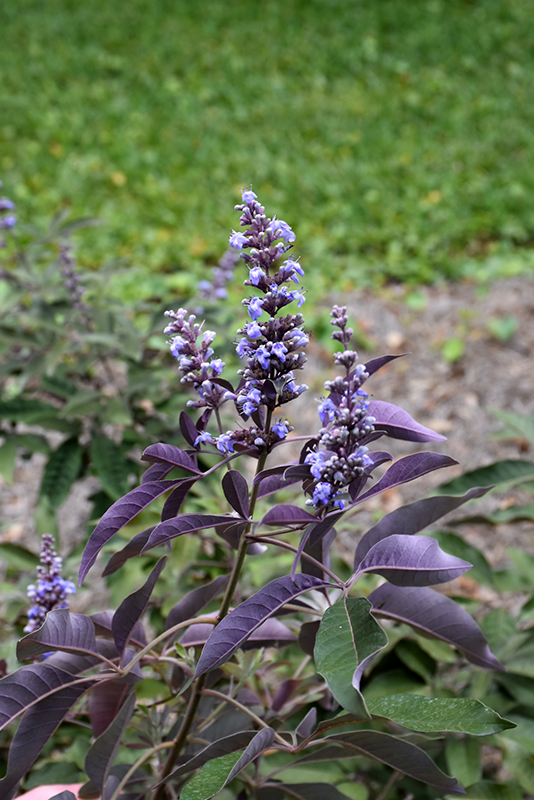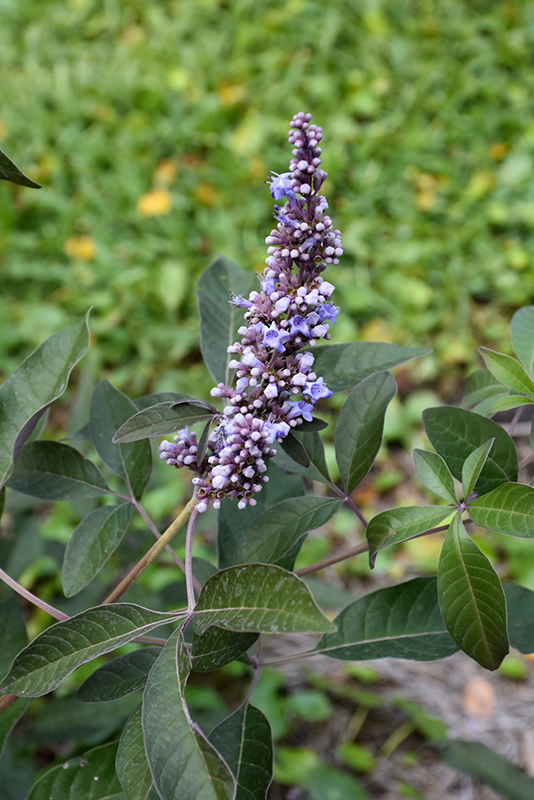Height: 8 feet
Spread: 8 feet
Sunlight:
![]()
![]()
Hardiness Zone: 6a
Brand: First Editions
Description:
A compact hybrid selection with airy spikes of reblooming purple flowers throughout summer; distinctive olive green palmate leaves have dusky purple undersides; likes full sun and is very easy to grow; may be shaped into a small tree
Ornamental Features
Flip Side® Chaste Tree has panicles of fragrant purple flowers with blue overtones rising above the foliage from early to late summer. It has attractive forest green foliage with plum purple undersides. The fragrant palmate leaves are highly ornamental but do not develop any appreciable fall color. However, the fruit can be messy in the landscape and may require occasional clean-up.
Landscape Attributes
Flip Side® Chaste Tree is an open multi-stemmed deciduous shrub with a shapely form and gracefully arching branches. Its average texture blends into the landscape, but can be balanced by one or two finer or coarser trees or shrubs for an effective composition.
This shrub will require occasional maintenance and upkeep. Trim off the flower heads after they fade and die to encourage more blooms late into the season. It is a good choice for attracting bees, butterflies and hummingbirds to your yard, but is not particularly attractive to deer who tend to leave it alone in favor of tastier treats. It has no significant negative characteristics.
Flip Side® Chaste Tree is recommended for the following landscape applications;
- Mass Planting
- Hedges/Screening
- General Garden Use
Planting & Growing
Flip Side® Chaste Tree will grow to be about 8 feet tall at maturity, with a spread of 8 feet. It tends to be a little leggy, with a typical clearance of 1 foot from the ground, and is suitable for planting under power lines. It grows at a slow rate, and under ideal conditions can be expected to live for 50 years or more.
This shrub does best in full sun to partial shade. It is very adaptable to both dry and moist locations, and should do just fine under average home landscape conditions. It is considered to be drought-tolerant, and thus makes an ideal choice for xeriscaping or the moisture-conserving landscape. To help this plant achive its best flowering performance, periodically apply a flower-boosting fertilizer from early spring through into the active growing season. It is not particular as to soil type or pH, and is able to handle environmental salt. It is highly tolerant of urban pollution and will even thrive in inner city environments, and will benefit from being planted in a relatively sheltered location. This particular variety is an interspecific hybrid.


